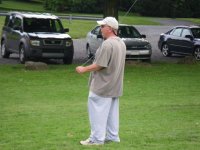afishinado
Moderator
Staff member
I’ve always admired Flip Pallot’s fly casting, smooth and graceful and effortless, IMO. He uses a lot of wrist with a short double haul and shorter casts (as in the video).
It never ceases to amaze me how different casters have their own style and even own method of casting and yet they all get the job done. Some just look better doing it, IMO. Check it out:
http://www.moldychum.com/home-old/2009/11/19/unlock-casting-secrets-with-flip-pallot.html
It never ceases to amaze me how different casters have their own style and even own method of casting and yet they all get the job done. Some just look better doing it, IMO. Check it out:
http://www.moldychum.com/home-old/2009/11/19/unlock-casting-secrets-with-flip-pallot.html




